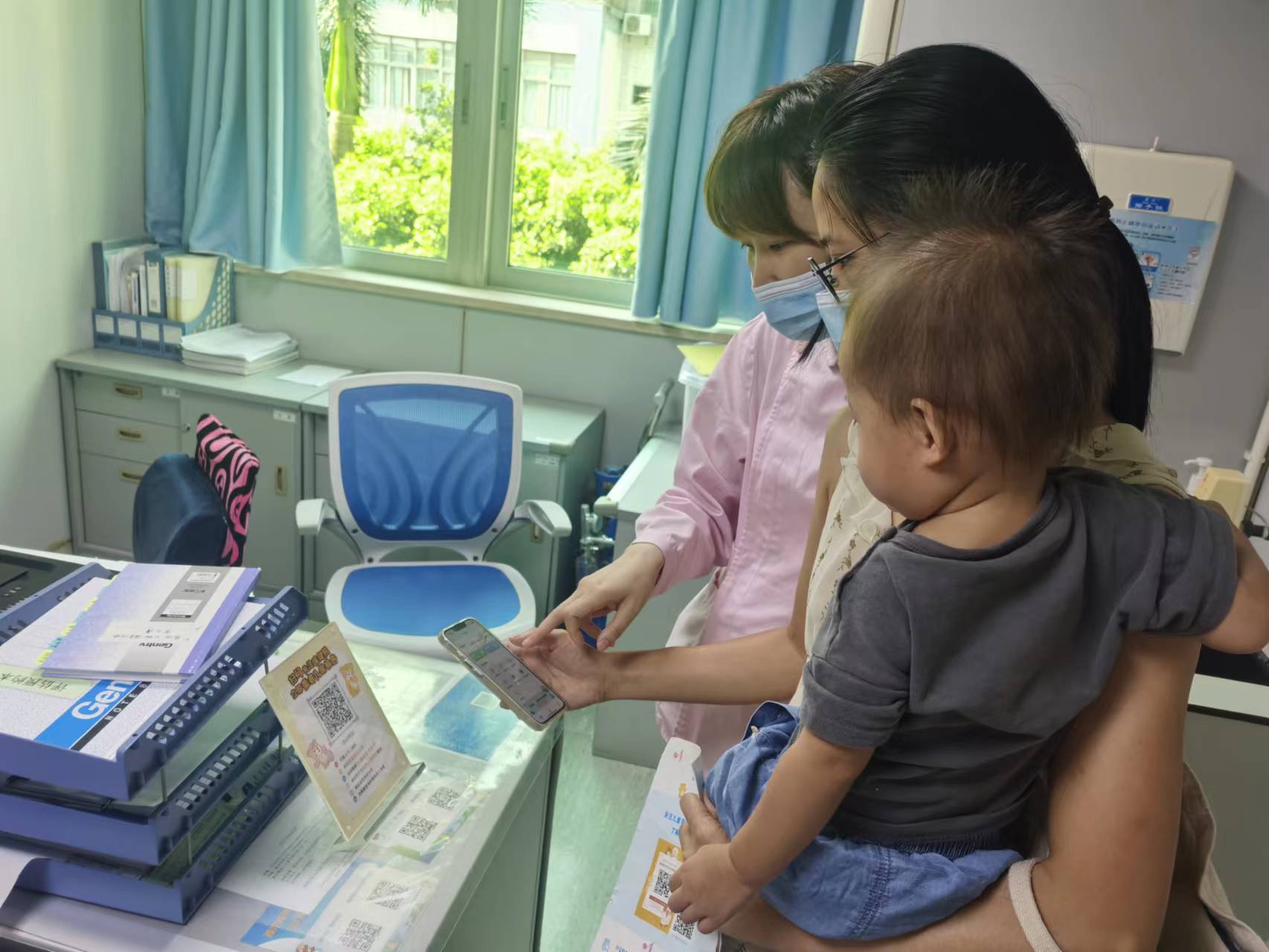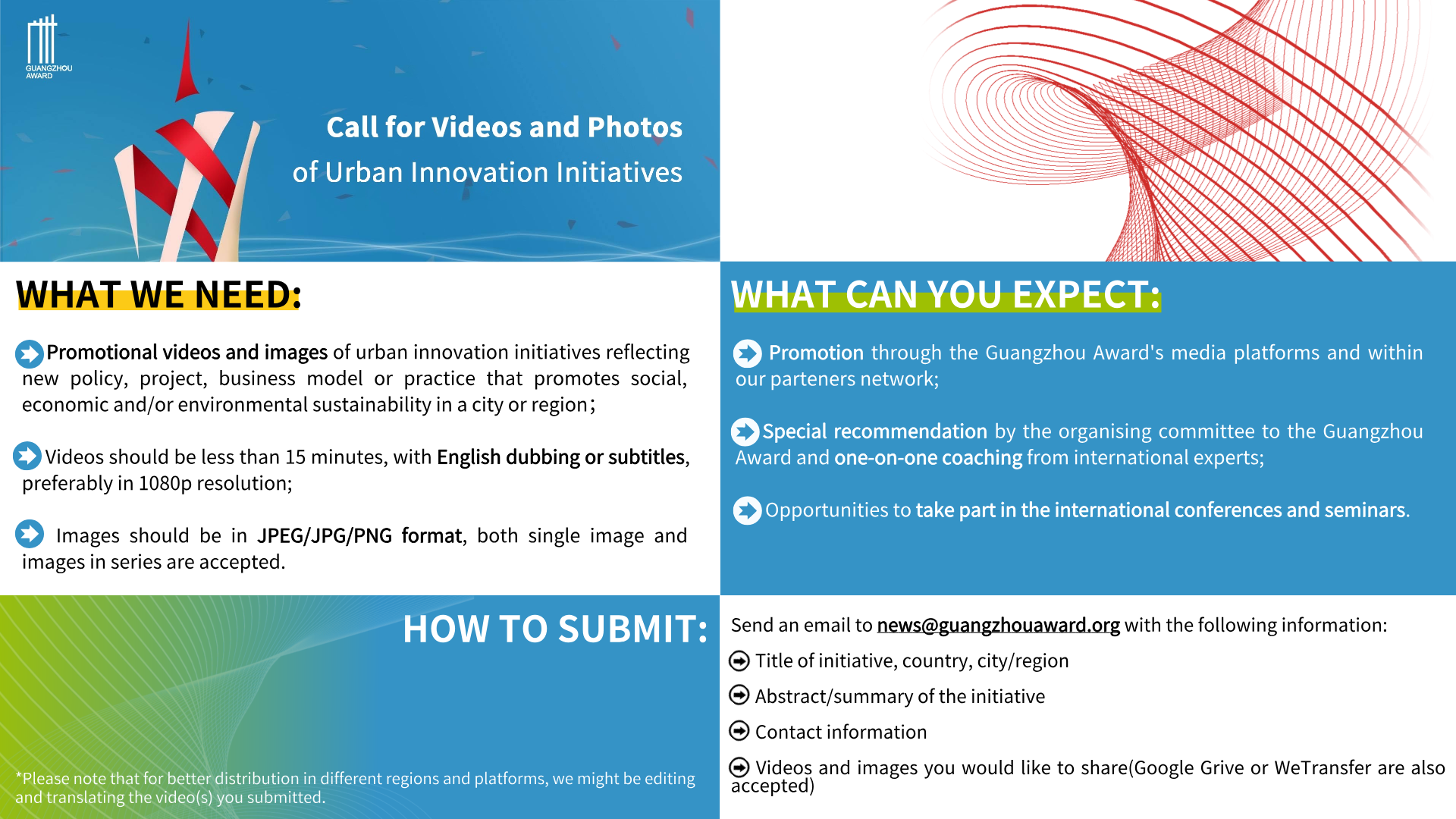Guangzhou, China
Integrated and smart neonatal health management system- empowering mothers, the family and the community
BASIC CITY DATA
- Population size: 18734000
- Population Growth Rate(%): 3.63
- Surface Area (sq.km): 7434.40
- Population Density (people/sq.km): 2530
- GDP Per Capita (U.S.$): 20943.8
- GINI Index:0.46
- Main Source of Prosperity: Advanced Manufacturing Industry, High-technology Industry

ABSTRACT
Guangzhou has set up a system where neonatal families could monitor neonatal jaundice at home and share the results with the healthcare system over the Internet. This provides a rapid and convenient AI screening tool to early identify and manage severe jaundice cases and obviated unnecessary trips to healthcare centers and hospitals.
About 60%-70% of infants develop neonatal jaundice, most of which are physiological, in rare cases, it may indicate serious underlying diseases such as severe bilirubin encephalopathy and develop an adverse prognosis, which is preventable and treatable.
After discharges from the hospital, parents are usually less knowledgeable and experienced in predicting and detecting risky jaundice, resulting in the overuse of tertiary health resources or misdiagnosing critical kernicterus. Based on the integrated health service delivery framework, by harnessing information and AI technology, Guangzhou developed a system that empowers mothers and families to actively assess newborn health conditions and predict the risk of infantile jaundice at home. It also allows community healthcare givers and tertiary hospital pediatricians to easily access comprehensive health records and implement rapid hospital referrals.
BACKGROUND INFORMATION
“Sustainable Development Goal 3:Good health and well-being. “
“The New Urban Agenda”
“Child Development Outline of China (2011-2020)” issued by the State Council of China;
“Maternal and Infant Safety Action Improvement Plan (2021-2025)” and “Healthy Children Action Improvement Plan (2021-2025)” issued by the National Health Commission of the People’s Republic of China.
ORIGINS
60% of term and 80% of preterm infants develop neonatal jaundice in China. While most of these cases are physiological, in rare cases, they may indicate serious underlying diseases such as bilirubin encephalopathy and kernicterus (with 50%~75% mortality and very expensive treatment). Thus, rapid differentiation, early diagnosis and urgent management of risky jaundice are critical, not only to preserve life, and avoid long-term neurologic deficits for the newborn, but also to optimize the use of health care resources.
In Guangzhou, around 160,000 babies are born each year. During the COVID-19 pandemic, it became apparent that neonatal care had to undergo major changes to avoid unnecessary visits to the hospital and possible contamination. A system was devised to enable parents to conduct routine tests at home and to share the results through the 5G network with the health care system. This proved to be a cost-effective and much-appreciated service.
This led the City of Guangzhou to address a neonatal challenge. In East Asia in general, and China in particular–prenatal jaundice. After discharge from the hospital, parents and community general practitioners are usually less knowledgeable and experienced in the prediction and detection of risky jaundice. It may either cause unnecessary tertiary hospital visits or lead to serious morbidity or mortality if the risky babies are not identified and referred to a hospital in time. An integrated, interconnected, universal accessible and cost-effective neonatal health management system was very much needed.
The initiative aims to improve the public neonatal health service delivering model and reduce the incidence of neonatal hyper-bilirubinemia encephalopathy and the associated morbidity and mortality by developing an integrated, interconnected, universally accessible, cost-effective and smart online neonatal health management system. The objective was to develop a system that could be conveniently used by mothers, family, community and rural health practitioners, tertiary hospital pediatricians as well as the government health sector administrators. After the initiative was implemented, the incidence of severe hyperbilirubinemia in Guangzhou significantly decreased from 0.61% in 2020 to 0.30% in 2022.
The innovation lies on several fronts. First, it is a voluntary system and no one is obliged to subscribe to the system. For those who subscribe, there is the harnessing of information on newborns and the evolution of the child's growth. This provides a basic profile for the newborn. Second, with the use of information and of technology, parents and community health workers can detect potentially serious cases of infantile jaundice and other ailments promptly. This involves the at-home monitoring of key indicators as well as imagery. Thirdly, the information are accessible across all children’s hospitals and referral hospitals so that, in doubt, the child can be sent to the nearest appropriate facility for further diagnosis and eventual treatment. The system and the information is accessible throughout the three-tier maternal and children health service delivery system in Guangzhou. The system integrates the needs of both parents and newborn children with resources and functions of community health centers, district-level maternal and children health care centers and hospitals. Data across the above stakeholders are pooled, interconnected and analyzed to constitute a smart knowledge base on growth conditions through the age of 18.
With the guidance and supervision of the Guangzhou Health Commission, the initiative was designed, developed and implemented by Guangzhou Women and Children’s Medical Center (GWCMC), the National Children’s Medical Center for Central and South China. All 11 district-level maternal and Child Health Care Centers and 202 community health care centers participate in the system. Over 200,000 families with newborn babies in Guangzhou have benefited from this system since the end of 2020.
The initiative is implemented by GWCMC staff, using the start-up funding of “Children Early Development Practical Technology Research Center of Guangdong” supported by the Guangdong Government. The system consists of an interactive knowledge base and an information sharing and communication system that can be accessed in real-time by all tiers of the maternal and child health care system through 5G connectivity. The system is AI-augmented to look at trends and tendencies and to correlate health challenges with other factors including past medical history. This constitutes the foundations of what might become the first step towards an integrated and smart systems (or metaverse) approach that will link the existing health-oriented system with social, economic and environmental determinants of health and wellbeing.
INNOVATIVE ASPECTS
It is both an evolutionary and a revolutionary initiative. In Guangzhou, 160,000 babies are born each year. After discharge from the hospital, parents and community general practitioners are usually less knowledgeable and experienced in the prediction and detection of risky jaundice. It may either cause unnecessary tertiary hospital visits or lead to serious morbidity or mortality if the risky babies are not identified and referred to the appropriate and nearest facility or hospital in time.
The COVID-19 pandemic revealed weaknesses and gaps in the management system for neonatal jaundice in the Guangzhou context. To address these weaknesses, the team carefully analyzed each of the challenges and integrated the needs, resources and functions of families, community health centers, district-level maternal and children health care centers and hospitals in the field of neonatal health monitoring and management.
Based on the three-tier maternal and children health service delivery system in Guangzhou, by harnessing information and AI technology, a locally adapted easy-to-use online system is developedwhere data across the above stakeholders are pooled, interconnected and analyzed. This empowers mothers and families to actively and continuously assess the health conditions of their newborns, especially the risk of neonatal jaundice.
The system is revolutionary as it is shared across the entire healthcare system including community healthcare givers to assist in rapid hospital referral, tertiary hospital pediatricians to have access to comprehensive health records, and hospitals and health administrators to track and monitor the regional neonatal health condition. It not only improves the newborn's wellbeing but also optimizes the use of tertiary health resources and contributes to an integrated health care delivery system in Guangzhou. In addition, the system is also evolutionary. The program has been continuously improved in practice, aligning with government regulations as well as the service needs of families, in order to provide better service and support.
DESIRED CHANGE OR OUTCOME
The system is improving the health and wellbeing of newborns and is reducing stress for their mothers. Just as importantly, the system optimizes the use of tertiary health resources and contributes to an integrated health care delivery system in Guangzhou. The gains in cost-efficiencies and cost-effectiveness enable the health care system to improve services across the board.
The system has raised awareness of the role and importance of community healthcare providers and families in the management of neonatal jaundice and establishes an accessible mother and family centered health monitoring system. Although the system is voluntary, the vast majority of mothers and to-be mothers are subscribing to the system. Currently, the program has assisted over 200,000 families to monitor neonatal jaundice. The system has paid for itself in terms of reduction in costs of providing emergency care and post-care services. The incidence of neonates with high bilirubin in Guangzhou decreased from 19.91% in 2018 to 10.78% in 2022 after the initiative was launched, of which the proportion of severe hyperbilirubinemia patients decreased from 0.57% to 0.30%. In the meanwhile, the system utilization increased from 7.05% in 2020 to 11.59% in 2022, which was significantly inversely associated with the incident of neonatal jaundice. It shows that the initiative effectively reduces the incidence of neonatal high bilirubin.
The indicators used for assessing the performance of this system include:
(1)Number of caregivers having installed and used the system.
(2)The incidence of neonatal bilirubin encephalopathy in Guangzhou.
(3)The number of hospitalized neonates with high bilirubin in Guangzhou region.
The project's innovation is based on a three-tier working network of mothers and children in Guangzhou City. It covers the entire territory of the metropolitan area of Guangzhou.
Since the launch of the program, more than 200,000 people have registered on the neonatal jaundice follow-up platform, with more than 1,200 daily records of neonatal jaundice values and more than 2,000 short messages sent through the system every day. In the future, 180,000 newborns are expected to benefit from the program every year.
RELEVANCE TO SUSTAINABLE DEVELOPMENT GOALS
Equal access to all public goods, and quality services in health; development of integrated and responsive policies and approaches in healthcare sector, to reduce the public health costs of inefficient mobility; universal access to health care services to reduce newborn child mortality.
Goal 3: Ensure healthy lives and promote well-being for all ages


 test
test Urban Innovation in China | Hainan: Transforming Mangroves into “Golden Groves”
Urban Innovation in China | Hainan: Transforming Mangroves into “Golden Groves” In Focus | Empowering the “She” in the Family
In Focus | Empowering the “She” in the Family In Focus | The World Earth Day: Planet vs. Plastics
In Focus | The World Earth Day: Planet vs. Plastics




















 Tel: +86 20 3780 4434
Tel: +86 20 3780 4434 Email: info@guangzhouaward.org
Email: info@guangzhouaward.org Address: Rm 1609, FuLiXinTianDi, No.307 Guangzhou Dadao Zhong, Yuexiu District, Guangzhou, Guangdong, 501600, PRC
Address: Rm 1609, FuLiXinTianDi, No.307 Guangzhou Dadao Zhong, Yuexiu District, Guangzhou, Guangdong, 501600, PRC




